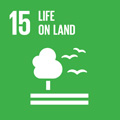- Docente: Liliana Milani
- Credits: 6
- SSD: BIO/06
- Language: English
- Teaching Mode: Traditional lectures
- Campus: Bologna
- Corso: Second cycle degree programme (LM) in Molecular and Cell Biology (cod. 5825)
-
from Mar 03, 2025 to May 26, 2025
Learning outcomes
With this course, the student acquires knowledge on methods and model systems to study different aspects of cell and developmental biology. In particular, the student learns: - to propose up to date experimental set up by means of optical and electron microscopy, from biological sample preparation to its observation; - how to choose a proper experimental model system and frame it in a comparative context. Also, the student becomes autonomous in the interpretation, comparison, and communication of scientific data on these topics.
Course contents
Methods to study cell and developmental biology
Molecular approaches and the use of microscopy will be described, as well as their application to classical animal model systems and to non-model organisms that have specific features making them of basic importance to investigate basic biological mechanisms.
Tools & techniques
Fluorochromes. Fluorescence microscopy. Laser scanning confocal microscopy. Two-photon microscopy. Light sheet fluorescence microscopy. Protocol for immunofluorescence.
Bioimages. Signal sampling, signal quantification, digital imaging and compression techniques. Acquisition, transformation, reduction, analysis, and interpretation of bioimages. Sampling Theorem. Transformations on bioimages (punctual, local, global). Sources of noise. Software for the analysis of bioimages (ImageJ).
FRAP (Fluorescence Recovery After Photobleaching). FRET (Fluorescence Resonance Energy Transfer). FLIM (Fluorescence Lifetime Imaging). Expansion microscopy.
Electron microscopy. Transmission electron microscopy (TEM). Scanning electron microscopy (SEM). Protocol for electron microscopy.
Model system choice
The problem with overgeneralization. The choice of the right model system given the biological problem to investigate. Surrogate and exemplary models.
Application of the described methods in the study of:
- specification, maintenance and differentiation of the germline
Animal germline specification (preformation and epigenesis). Examples of preformation (Drosophila melanogaster, Caenorhabditis elegans). Examples of epigenesis (axolotl, mouse). Evolutionary aspects. Germline quiescence. Transcriptional regulation and chromatin remodelling (Drosophila, C. elegans, mouse). Silencing of transposable elements by piRNAs (Drosophila, topo). Study of chromatin morphology with FLIM-FRET at the two-photon microscope. Metabolic characterization of male germ cells by assaying FLIM of coenzymes NAD(P)H and FAD at the two-photon microscope. Applications of light-sheet microscopy.
- ageing
The ageing process and its causes. The role of telomeres in ageing. Telomere shortening. Telomeres and associated proteins: the shelterin complex. Telomerase and its regulation. Methods to measure telomere length (Q-FISH). Methods to measure telomerase activity (using FRET). Senescence and ageing. The role of mitochondria in ageing. Free radical theory of ageing. Mitochondrial DNA replication in the theory of ageing. Stem cell hypothesis of ageing. Model systems to study ageing.
Readings/Bibliography
Slides of the lessons and articles/reviews made available on Virtuale.
Teaching methods
Frontal lessons.
Assessment methods
The final exam consists of an oral interview and aims to evaluate the achievement of the didactic objectives: knowledge of the methodologies for the study and understanding of biological processes and their applications.
Teaching tools
Slides of the lessons with the use of video projector and PC.
Office hours
See the website of Liliana Milani
SDGs

This teaching activity contributes to the achievement of the Sustainable Development Goals of the UN 2030 Agenda.
